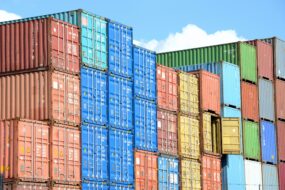Contents

One crucial factor that can make or break an eCommerce business is fulfillment—the process that takes over once a customer clicks ‘buy’. In this guide, we will delve into eCommerce fulfillment, its importance, how to improve it, and the crucial role of Third-Party Logistics providers (3PLs) in ensuring fulfillment success.
Understanding eCommerce Fulfillment
eCommerce fulfillment refers to the series of operations that kick into gear once a customer places an order online. It covers everything from inventory management and order processing to shipping and returns handling. A smoothly running eCommerce fulfillment process ensures that your customers receive their orders accurately and on time, leading to satisfied customers and potentially repeat business.
Key Stages in eCommerce Fulfillment
A well-coordinated eCommerce fulfillment process typically involves several stages:
- Receiving inventory: This is the stage where you receive goods from your manufacturers or suppliers and log them into your inventory system.
- Inventory storage: Once the goods are in your possession, you store them safely until they’re sold.
- Order processing: When a customer places an order, it’s retrieved from storage, packed, and prepared for shipping.
- Shipping: The packed order is shipped to the customer using the selected shipping method.
- Returns management: If a customer decides to return an item, the returned item must be processed, restocked (if appropriate), and the customer’s account must be refunded.
How to Improve eCommerce Fulfillment
Improving your eCommerce fulfillment process can significantly enhance customer satisfaction and your bottom line. Here are some strategies:
- Inventory management: Use inventory management software to keep track of inventory levels in real time, minimizing the risk of overselling or underselling.
- Packaging process: Evaluating cheaper packaging options, whether it is a poly mailer, bubble mailer, or corrugated box.
- Packaging design: Your product’s package size can be a determining factor as well. If its dimensional weight is larger than its actual weight, it can be more costly.
- Shipping options: Offer multiple shipping options using different carriers and speeds to give customers the flexibility to choose based on their needs and budgets. Some carriers are cheaper or quicker depending on what it is and where it’s going.
- Returns: Implement an effective returns policy that makes it easy for customers to return products if necessary. This can enhance customer trust and loyalty.
Finding and Selecting a Third-Party Logistics Provider (3PL)
As your eCommerce business grows, managing fulfillment in-house can become challenging. This is where a 3PL provider can help.
- Capabilities: Examine the services they offer, their technological capabilities, and their ability to scale as your business grows. A good 3PL should be able to grow with your business and meet your customers’ increasing demands. Some 3PLs just do apparel and some just do food and beverage products. Evaluate your options and make sure they have a customized solution suited to your needs.
- Location: Consider their proximity to your customers. A 3PL with a strategic location or multiple warehouses can ensure faster delivery times and considerably lower shipping costs.
- Record of success: Look at customer reviews, case studies, and their reputation in the industry. A successful track record is a strong indicator of reliable service.
Working with a 3PL
Once you’ve selected a 3PL, it’s important to establish clear expectations. This includes defining service level agreements (SLAs) and maintaining open lines of communication. Regularly monitor their performance and work closely with them to address any issues or challenges. A successful partnership with your 3PL can significantly improve your eCommerce fulfillment process.
Future Trends in eCommerce Fulfillment
Looking ahead, several trends are set to shape the future of eCommerce fulfillment. Automation and robotics will play an increasing role in speeding up processes and reducing costs, allowing brands to fulfill cheaper. Sustainable and eco-friendly practices will also become more critical, with many businesses seeking to minimize their carbon footprint. Personalized customer experiences will remain key, with an emphasis on fast and reliable delivery.




